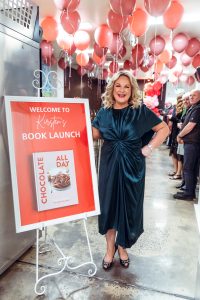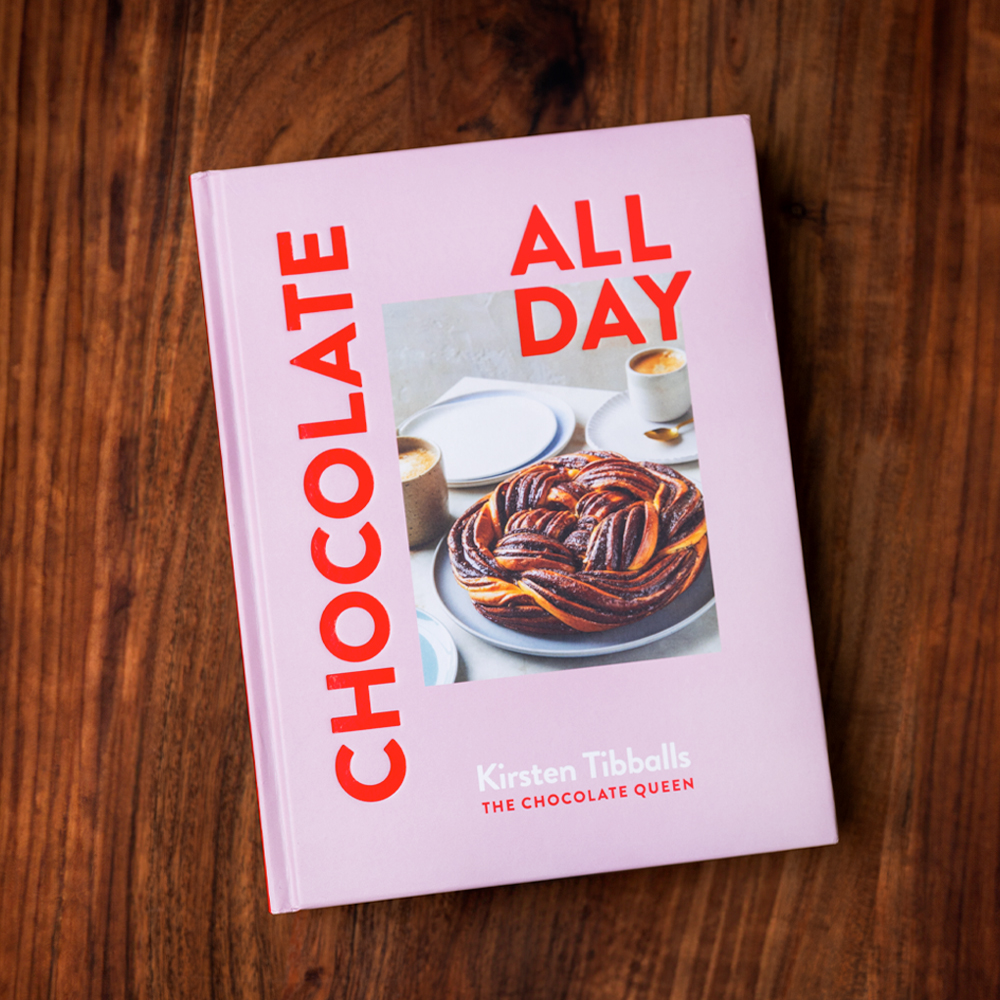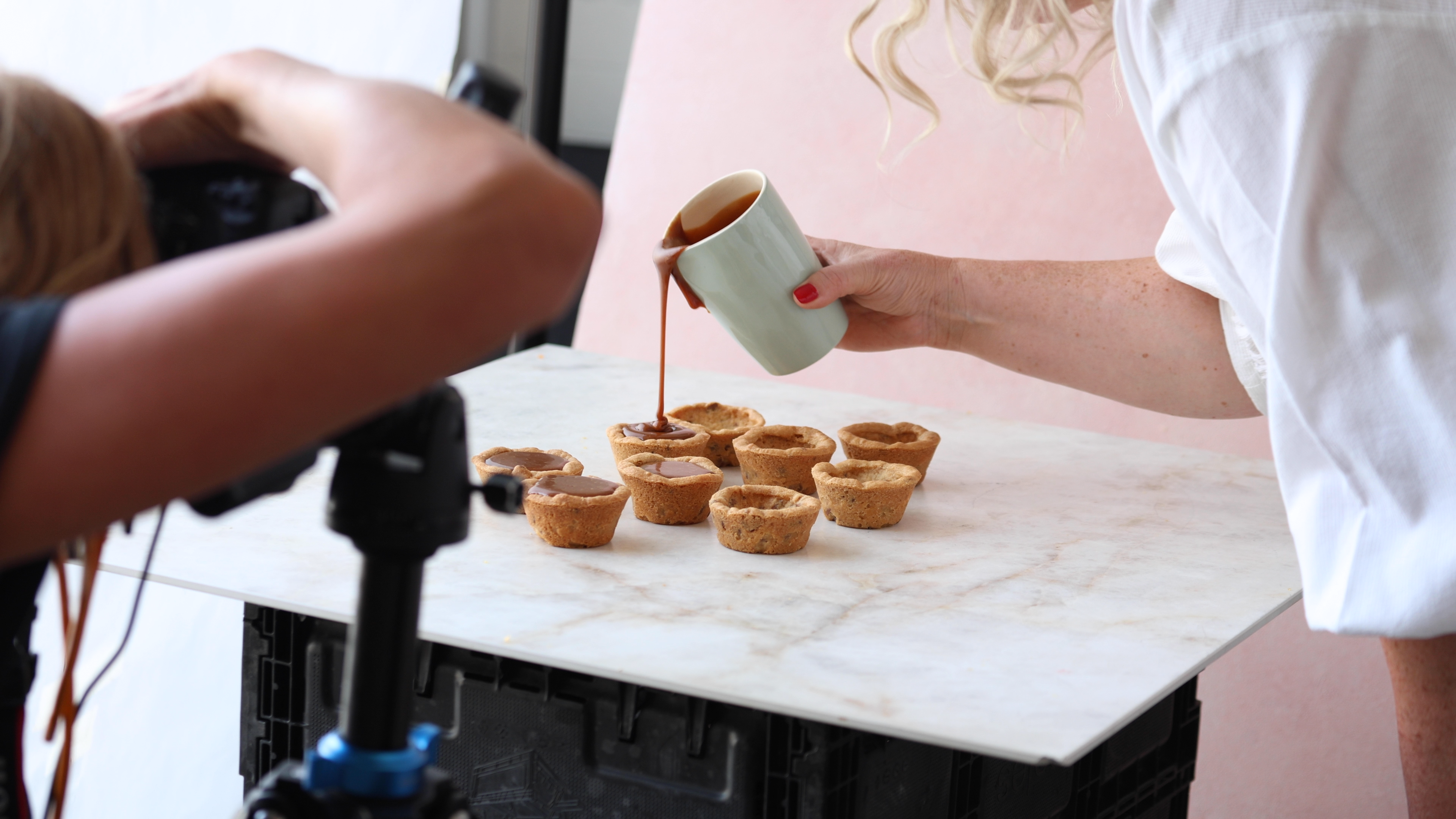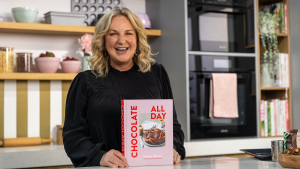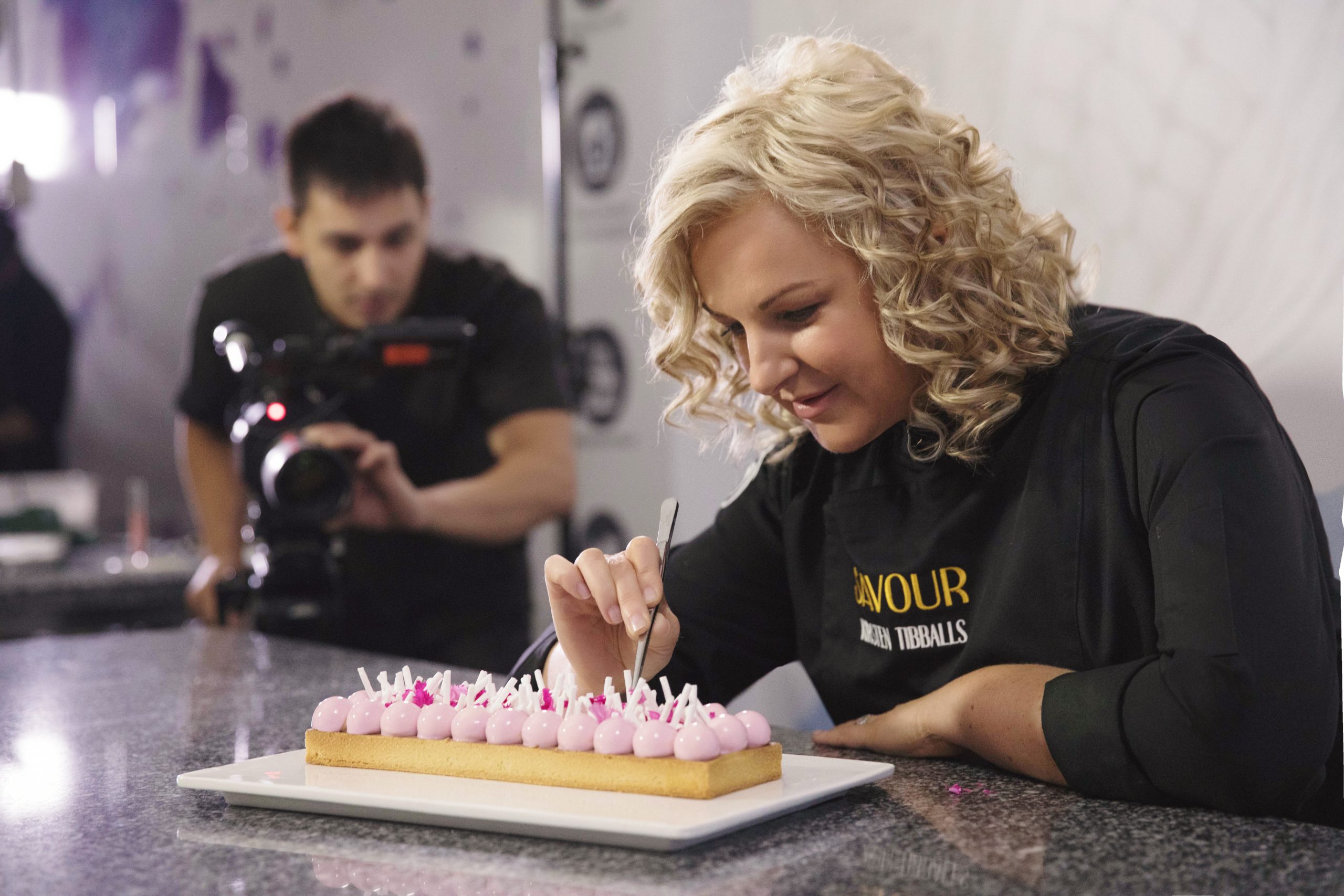I often get asked, ‘how do you make a cookbook?’ or ‘I’ve written a cookbook but how do I get it published?’
Doing something for the first time can be difficult. I get it!
My first cookbook, Chocolate to Savour, was self-published which was a huge learning curve. My two subsequent cookbooks, Chocolate and Chocolate All Day, were published through Murdoch Books.
With all this experience, both in self-publishing and working with a publisher, I’m here to help!
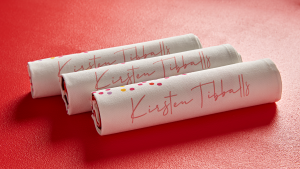
Self-Publishing
For a cookbook to be successful, investigation and market research is vital. You need to ensure you have an audience for the type of cookbook you’re creating.
If your aim is to create a cookbook for industry professionals, you’re best to self-publish.
A cookbook aimed at industry professionals is very unlikely to be picked up by a publisher because it will have a much smaller audience reach – unless the author is a very famous chef.
Chefs will invest money into purchasing professional cookbooks to learn and build on their already established skills. This is why you need to include a lot of technical information, images, and detailed recipes.
Requirements for self-publishing:
- The ability to invest quite a bit of money in creating and publishing the cookbook.
- Sourcing professionals. People with skills you may lack – an editor, graphic designer, photographer, printer, and unless you are confident in your styling abilities, a stylist.
- To be extremely organised and manage a timeline.
Money, Money, Money!
Although daunting, self-publishing can be a wonderful process which allows you to choose every aspect of the book.
One of the largest considerations when deciding to self-publish is the financial considerations.
Deep pockets are required!
Prior to starting the cookbook creation process, my suggestion is to investigate the total cost of the book, including:
- Editing
- Photography
- Styling
- Graphic design
- Printing
- Freight and storage
It’s important to note that if selling books through a distributor, wholesalers typically pay 60% less than the recommended retail price.
Storytime!
My first cookbook, Chocolate to Savour, was self-published. I went top of the range with all the finishes. It was designed as a coffee-table style book with a dust cover, multiple pictures on every page, it was full gloss and used thick paper. The printing alone cost $24 per book – this was quite a few years ago – and I ordered 5000 books. It was a huge investment.
On top of that, I had to pay for the design, editing, photography, and storage.
The book was a success, selling for $110 per copy, and quickly selling out. Instead of using a distributor, I was able to sell almost 5000 copies myself – a make-or-break decision for the cookbook’s success. If I had gone through a distributor, I would’ve been selling the books at a loss.
Selling a cookbook yourself without a distributor is not going to work for everyone, so it’s essential to carefully consider the investment required for creating and self-publishing a cookbook. However, there are definitely ways to reduce costs when self-publishing, such as opting for:
- Matte finish instead of full gloss
- Thinner paper stock
- A softcover
- A smaller book size
- Fewer colour pages
- Fewer images
Working with a Publisher
To work with a publisher, you need to have a cookbook that offers a broad audience appeal.
A cookbook tailored to the home cook, featuring achievable recipes, will have a larger target audience and is more likely to get picked up by a publisher.
Establishing a good relationship with your publisher is essential. They’re invested in your success because they believe your cookbook will sell. Therefore, allow them to guide you and facilitate the process by promptly addressing their suggestions and requests.
Timeline
The first items a publisher will request are:
- An outline of the entire book, including the concept, a breakdown of chapters, and the total number of recipes.
- Identification of your target audience.
- Your sales and marketing plan for the book.
Publishers often also request a sample chapter, which typically includes recipes and may incorporate additional elements such as:
- Photography
- Graphic design
Think of it as an audition. The sample chapter is a way to share your vision for the cookbook, and in turn, a way for the publisher to assess its marketability.
Once you sign a contract with the publisher, it generally takes 24 months for your book to be completed.
- The first 12 months is typically used to develop and test all your recipes.
- At the 12-month mark, you’ll submit the manuscript to the publisher, and photography will begin.
- The next 12 months are spent liaising with the publisher, editor, and design team. Finally, the book goes off to print and marketed prior to the release.
Versatile Recipes
Now, let’s talk recipes.
You need to curate a versatile yet well-balanced range of recipes that is aligned with the cookbook’s concept.
The recipes also need to be related or connected in some way so they can be grouped into chapters. Generally, the publisher will assist with grouping the recipes into chapters.
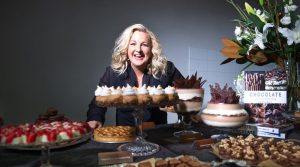
Design & Aesthetics
The publisher will help you with the aesthetics of the cookbook. We’re talking vibe, style, feel, and design – all of which should complement the concept of your cookbook.
Handy hint: Assist the publisher in understanding your cookbook’s potential by taking photos of your products along the way. By no means do they need to be professional photos, even quick snapshots can provide a solid starting point for design.
Top Design Considerations:
- All design choices should match the style of cookbook.
- The front cover and internal design of the cookbook should be cohesive.
Photography
Many publishers have a list of preferred photographers and stylists. Given their collaboration history, the publisher knows they are reliable and do brilliant work.
Some publishers may allow you to select your own photographer and stylist. If you want to work with a specific photographer, I’d recommend negotiating this in your contract before starting to write the book.
Reasons for selecting your own photographer and/or stylist include:
- You’ve worked with them previously.
- You admire their work and have always wanted to work with them.
- You believe their style compliments the theme of your cookbook.
Some cookbooks feature an image for every recipe, while others have a couple of photos for every 4-5 recipes. I’m a very visual person so I like to have a photo for every. single. recipe.
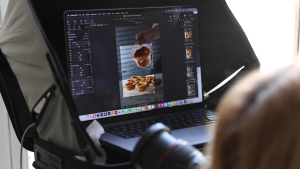
The front cover image should be captivating, providing enough room for the book title and author’s name while still capturing the audience’s attention.
Something you may not know:
When the book is published, the rights to the photographs are typically owned by either the photographer or the publisher.
The publisher will generally select 6-7 images to promote the cookbook. You’ll only be given these images for promotional use.
Distribution
When approaching a publisher, it’s important to have a clear plan for selling your cookbook.
The publisher will want the following information:
- Do you plan to sell the book yourself?
- Are you relying solely on the publisher for marketing and distribution?
- Will the book be sold exclusively through retail stores?
- Do you have a patisserie or restaurant where you’ll sell copies?
- Will you promote the book to a large social media audience?
Additionally, you’ll need to provide information about your target audience. For example, what countries your followers are in.
Contracts
When discussing a contract with your publisher, it’s important to understand that authors with a larger audience reach and a bigger profile will be more likely to negotiate for more creative and artistic license. They also tend to have a better understanding and ability to contribute compared to those who are just starting out.
Here are some of my key discussion points when it comes to negotiating a contract with the publisher.
Questions to consider asking:
- What is the proposed recommended retail price for the cookbook?
- Will the book have a hard cover or soft cover?
Aspects of the book that the publisher may determine unless otherwise negotiated and agreed upon in the contract:
- Whether you have the option to select your own photographer and/or stylist.
- Whether the finish of the book will be matte, semi- gloss, or full gloss.
- Whether there’ll be a photographed image for every recipe in the book.
- Whether you’ll have final say over the image used for the front cover.
- Whether you’ll have a say in the images selected for promotional use.
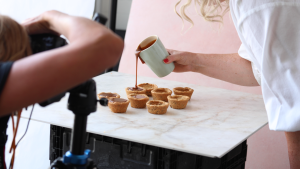
Don’t get me wrong, there is so much more that you can discuss and negotiate, but I find the list above is a good starting point.
The most important thing to remember is this:
Once you’ve submitted your manuscript to a publisher, trust the process. Your job is done at that point; it’s now time to allow the publisher to do theirs. Publishers possess a wealth of knowledge and experience that can greatly contribute to the success of your cookbook. Trust in their expertise to deliver the best possible outcome for you.
Final Words
Creating a cookbook can feel daunting, and knowing whether to self-publish or use a publisher can be equally confusing.
To simplify the decision:
- For a cookbook aimed at home-cooks, working with a publisher is often the preferred option.
- For a cookbook targeting industry professionals, self-publishing is typically recommended.
Having experience in both self-publishing and working with a publisher has been an invaluable learning curve.
There is so, so much that goes into creating and publishing a cookbook. I hope this insight into the differences between self-publishing and working with a publisher has been helpful.
